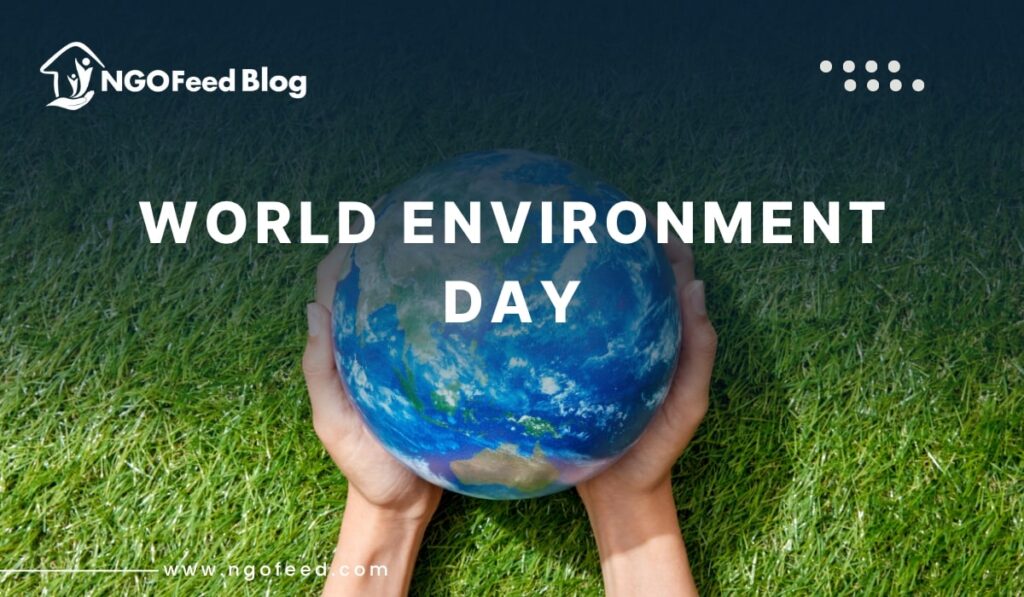World Environment Day: Observed every 5th June, World Environment Day is a major environmental awareness project sponsored by the United Nations. Driven by the United Nations Environment Programme (UNEP), the day draws millions of people in more than 150 countries to inspire them to save the environment via policy, action, and knowledge.
The environmental disaster is already a present reality in 2025, not a future threat. From devastating wildfires in Australia and Canada to escalating sea levels endangering Pacific islands and intense heat waves across South Asia, climate change, biodiversity loss, and pollution are changing our life style and survival skills. 2025 World Environment Day offers an absolute stage for knowledge, invention, and activity.
“What we are doing to the forests of the world is but a mirror reflection of what we are doing to ourselves and to one another.” – Mahatma Gandhi
Table of Contents
World Environment Day Background and History
Born out of the 1972 Stockholm Conference on the Human Environment, the first significant UN conference devoted to worldwide ecological problems, World Environment Day. Under the theme “Only One Earth,” the first WED was observed in 1974—a message that is even more pertinent in 2025.
Every year a different host country and topic draw worldwide attention to particular environmental issues by involving governments, NGOs, schools, businesses, and media.
Also Read: Role of NGOs in Sustainable Development
Reasons for World Environment Day Celebration
Celebrating World Environment Day seeks to:
- Raise knowledge of pressing environmental concerns.
- Encourage participation in restoration and climate action.
- Encourage governments to embrace green policies and techniques.
- Create a worldwide network for sustainable growth
- motivate local conservation initiatives
- It presents the planet a rare chance to consider the tenuous connection between environmental integrity and human survival.
Theme for World Environment Day 2025
Empowerment Earth: Innovation for a Greener Future
The 2025 subject highlights nature-positive ideas, environmentally friendly technology, and green innovation. It stresses how inclusive green economies, young leadership, and scientific advancement can help to stop the environmental disaster and guide us toward global well-being.
Given the noteworthy climate events planned for 2025—including COP30 preparations and growing demand for corporate net-zero objectives—this issue is especially pertinent.
Significance of World Environmental Day
- Increases ecological awareness across all age groups.
- Strengthens global cooperation in pursuit of environmental justice
- Influences environmental policy-making and UN resolutions
- Encourages communal activity and sustainable practices.
- Increases Indigenous, rural, and disadvantaged communities’ voices.
- Engages media, teachers, artists, and activists to usher a cultural transformation.
- WED offers a mid-point reflection and call for acceleration as we approach the second half of the UN Decade on Ecosystem Restoration (2021–2030).
Also Read: Role of NGOs in Biotechnology
Environmental Problems in 2025: Under Closer Inspection
Wed 2025 brings into clearer perspective the following serious environmental problems:
- Climate Emergency: Global temperatures have exceeded 1.5 degrees Celsius above pre-industrial levels over 2023–2025, hence highlighting the need of adaptation and mitigation.
- Plastic Pollution: The world’s annual production of over 400 million tons of plastic, most of which winds up in food chains and oceans.
- Loss of biodiversity: We are on the verge of a sixth mass extinction. Over 1 million species are in peril of disappearing.
- One point eight billion people reside in areas of severe water shortage by 2025.
- Particularly in cities, air pollution affects nine out of ten individuals worldwide.
- Food security is compromised by unsustainable farming, pesticide use, and climate changes—that is, food system collapse.
International Events and Projects
Everywhere, countries observe the day with:
- Mass tree-planting programs and afforestation initiatives
- River and beach clean-ups done by schools and nonprofits
- Workshops in universities on sustainability
- Art exhibitions, environmental marches, and climate marches
- Launch of green initiatives, including carbon taxes or restrictions on single-use plastic
- Corporate CSR initiatives emphasizing climate responsibility
- Digital platforms have also become strong instruments for awareness campaign via internet petitions, virtual meetings, and eco-tech hacking events.
Function of UNEP and International Cooperation
UNEP coordinates and helps:
- The yearly theme and world campaign
- Collaborative partnerships with academic institutions, governments, and business partners
- Publishing scientific papers and action plans
- Support for developing countries by way of capacity building and financing
- Watch for international agreements, including the Paris Agreement, Biodiversity Framework, and Plastics Treaty (expected 2025).
- With UNEP, World Environment Day is tactical rather than just symbolic.
National and Regional Observance (India and Elsewhere)
Often spearheaded by the Ministry of Environment, Forest and Climate Change (MoEFCC), WED has been enthusiastically observed in India. Among the main initiatives are:
- Swachh Bharat promotions
- Namami Gange for river revitalization
- Events sponsored by the National Biodiversity Authority
- Schools’ participation in the Eco Club Programme
- Grand WED celebrations, including technological exhibits, indigenous storytelling, and sustainable development dialogues, are also arranged by countries like Germany, Kenya, Brazil, Japan, and Canada.
Role of Youth and Education
- Youth engagement is absolutely necessary in WED:
- Students conduct green audits and model UN dialogues.
- Universities start sustainability curriculae and climate action initiatives.
- Social media influencers advocate eco-conscious lifestyles.
- Leading youthful climate activists like Greta Thunberg and Licypriya Kangujam keep momentum going.
- From green businesses to eco-entrepreneurship, the 2025 theme especially promotes youth-led innovation.
Also Read: Role of UNHRC in India
People’s Contribution
Everyday Green Initiatives:
- Reject single-use plastic
- Walk, ride, or take public transportation.
- Use energy-efficient appliances to help conserve electricity.
- Compost kitchen garbage
- Help organic and locally made goods.
- Create awareness by means of social media, blogs, and conversations.
- Together, people’s actions have the potential to affect more complex systems.
Technology and Innovation’s Role
In green innovation, 2025 will see major growth, including:
- Big Data and Artificial Intelligence for Climate Forecasting
- Vertical agriculture and aquaponics for sustainable food
- Biodegradable substitutes for plastic
- Intelligent grids and solar microgrids in rural electrification
- Models of circular economy that cut garbage and promote reuse
- Investing in planet-positive technology are both startups and major worldwide companies.
Also Read: Role of NGOs in Sustainable Agriculture
Although progress is evident, hurdles remain:
- Companies’ greenwashing efforts
- Political inactivity in several nations
- Financial injustice in execution of remedies
- Absence of environmental instruction
Overconsumption culture
WED 2025 challenges us to rise above these obstacles with courage, science, and solidarity.
Way Ahead and Summary
Celebrating World Environment Day 2025 helps us to remember that the Earth is at a pivotal point. The direction of future generations will depend on the decisions we take right now. It is a day to rethink our connection with nature, commit to lifestyle changes, and push our leaders to give environmental justice first priority; it is not only a day to plant trees or pass slogans.
Also Read: Role of NGOs in Environmental Protection
Rather than a symbolic gesture, let 5 June 2025 be a strong step toward eco-conscious living, legislative innovation, and a regenerative future. The Earth is a living being that supports all of us; it is not a resource.



